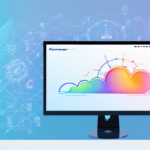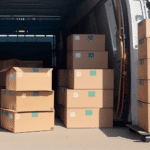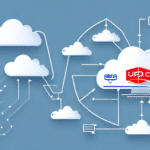How to Connect, Optimize, and Manage LSO for Sendcloud
In today's fast-paced world, an efficient shipping process is essential for any e-commerce business to succeed. Sendcloud offers a comprehensive solution for all your shipping needs, but to elevate your shipping process further, integrating Local Service Optimization (LSO) is crucial. In this article, we'll delve into everything you need to know about LSO and how to effectively connect, optimize, and manage it within your Sendcloud shipping operations.
Understanding LSO and Its Importance for Sendcloud
What is Local Service Optimization (LSO)?
Local Service Optimization (LSO) is a shipping optimization technique that consolidates shipments based on their geographical locations. By grouping multiple shipments heading in the same direction into a single delivery, businesses can minimize the number of delivery vehicles required, thereby reducing both operational costs and environmental impact. This approach is particularly beneficial for businesses operating in densely populated urban areas, where traffic congestion can significantly escalate delivery expenses.
According to a U.S. EPA report, optimizing delivery routes can lead to substantial reductions in fuel consumption and greenhouse gas emissions, contributing to a more sustainable business model.
Why is LSO Important for Sendcloud Users?
By integrating LSO with Sendcloud, businesses can achieve notable cost savings while enhancing their sustainability efforts. Additionally, LSO can lead to improved delivery times by enabling more efficient routing, which is essential for businesses offering time-sensitive delivery options like same-day or next-day shipping.
Furthermore, LSO enhances customer satisfaction by providing more competitive shipping rates and faster delivery options. The reduction in delivery vehicles also alleviates traffic congestion and improves air quality, benefiting both the local community and your brand's reputation.
Connecting and Integrating LSO with Sendcloud
Step-by-Step Integration Guide
Integrating LSO with Sendcloud involves a series of straightforward steps to ensure seamless operation:
- Select a Compatible Shipping Provider: Ensure your shipping provider supports LSO. Popular providers include UPS, FedEx, and DHL.
- Access Your Sendcloud Account: Log in to your Sendcloud account and navigate to the "Shipping Settings" tab.
- Integrate Shipping Provider: Select "Integrations" from the left-hand menu and scroll to your shipping provider's integration.
- Enable LSO: Click on the "Settings" button and toggle the LSO option to activate it.
- Save Settings: Save the changes to complete the integration process.
Once integrated, LSO will begin optimizing your shipping process for enhanced efficiency and cost-effectiveness.
Optimizing and Managing LSO for Enhanced Shipping
Tips for Effective LSO Optimization
- Consolidate Shipments: Group as many shipments as possible without impacting delivery times or quality.
- Optimize Delivery Routes: Adjust routes to minimize travel time and fuel consumption.
- Collaborate Locally: Partner with other businesses in your area to further reduce shipping costs through shared deliveries.
Implementing these strategies ensures that your shipping process remains cost-effective and efficient.
Best Practices for Managing LSO
- Regular Performance Monitoring: Continuously track LSO performance to ensure optimal routing and consolidation.
- Evaluate Shipping Provider Capabilities: Periodically assess your shipping provider's LSO features and consider switching providers if necessary for better performance.
- Team Training: Educate your team on the importance of LSO and the best practices for managing it effectively.
Adhering to these best practices helps maintain the efficiency and effectiveness of your LSO integration.
Overcoming Common LSO Challenges
- Complex Routing and Scheduling: Utilize advanced routing and scheduling software tools to streamline the LSO process.
- Variable Package Sizes and Weights: Standardize package dimensions and weights to facilitate easier shipment consolidation.
- Finding Compatible Shipping Providers: Collaborate with multiple shipping providers to identify the best LSO options for your business needs.
Addressing these challenges head-on ensures that your LSO integration runs smoothly and delivers the desired benefits.
Benefits and Impact of LSO on Sendcloud Shipping
Environmental and Cost Benefits
- Reduced Carbon Footprint: Fewer delivery vehicles result in lower greenhouse gas emissions.
- Cost Savings: Decreased need for multiple delivery vehicles and reduced fuel consumption lead to significant cost reductions.
Adopting LSO not only supports your bottom line but also aligns your business with environmentally sustainable practices.
Enhanced Delivery Efficiency and Customer Satisfaction
- Improved Delivery Times: More efficient routing translates to faster deliveries.
- Increased Customer Satisfaction: Reliable and cost-effective shipping options enhance customer loyalty and satisfaction.
These benefits collectively strengthen your market position and foster customer retention.
Future Trends and Measuring Success of LSO
Future of LSO in Sendcloud Shipping
The future of LSO in Sendcloud shipping is promising, with growing emphasis on sustainability and cost efficiency. As technological advancements continue to enhance routing algorithms and data analytics, LSO will become increasingly integral to e-commerce logistics strategies.
Key Metrics to Track for LSO Success
- Carbon Footprint Reduction: Monitor the decrease in greenhouse gas emissions resulting from optimized shipping routes.
- Cost Savings: Track savings achieved through reduced delivery vehicle usage and fuel consumption.
- Delivery Performance: Evaluate improvements in delivery times and overall customer satisfaction levels.
Regularly tracking these metrics allows you to assess the effectiveness of your LSO integration and make informed adjustments to optimize performance.
Conclusion
Integrating Local Service Optimization (LSO) with your Sendcloud shipping process offers a multitude of benefits, from substantial cost savings and reduced environmental impact to enhanced delivery efficiency and customer satisfaction. By following the steps outlined in this guide and adhering to best practices, you can effectively connect, optimize, and manage LSO within your shipping operations. Continuously evaluating and refining your LSO strategy ensures that your shipping process remains efficient, sustainable, and aligned with your business goals.






















